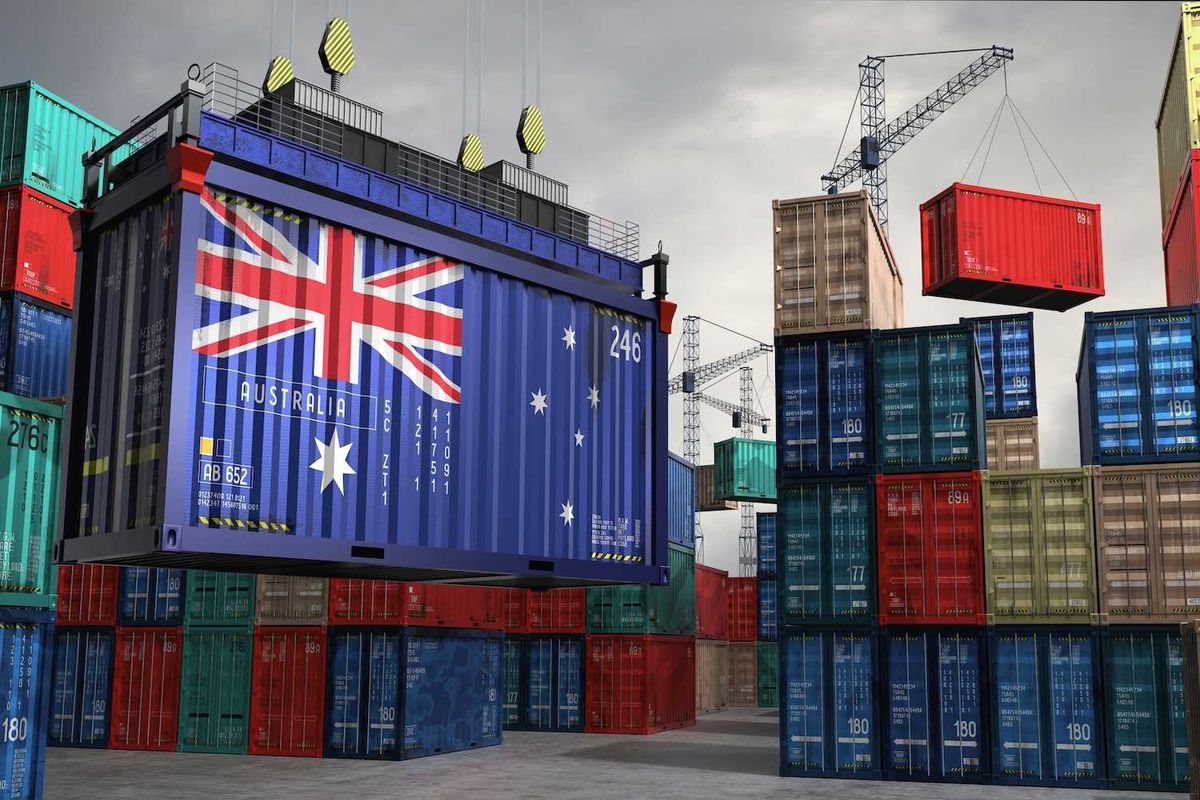Australian Resource, Energy Earnings Expected to Hit AU$369 Billion in 2025/2026
The Australian government said the country's resource and energy exports are set to ease, but will remain a cornerstone of the country’s total exports.

Australia’s latest Resources and Energy Quarterly report, released in September, highlights a modest downgrade in the nation’s export outlook amid softer commodities prices.
The government now expects resource and energy export earnings to fall from a record AU$385 billion in the 2024/2025 period to AU$369 billion in 2025/2026 — a decline of about 5 percent. The organisation projects a further dip to AU$354 billion for 2026/2027 as global demand eases and prices normalise from recent highs.
Despite the pullback, the resources and energy sector remains the backbone of Australia’s trade performance, accounting for roughly two-thirds of total merchandise exports. This suggests that amidst ongoing price fluctuations, the country’s evolving mining industry continues to be a significant contributor to its economic growth.
In the June 2025 quarter, Australia’s real GDP rose by 0.6 percent, with mining value-added growing by 2.3 percent.
Iron ore mining rose by 6.1 percent as bad weather disruptions ended. The country also remains the largest iron ore producer globally. Meanwhile, exploration and mining support services gained 2.3 percent, oil and gas extraction increased 1.2 percent and coal mining rose by 0.8 percent, while other mining fell by 0.7 percent.
The report highlights that the resources and energy sector contributes around 11.4 percent of GDP.
Direct employees in the resource and energy sector are estimated at 300,000 people.
Outlook for commodities prices
Gold continues to shine, reaching over US$3,800 per ounce in September. The report explains that prices rose due to expectations of US interest rate cuts and concerns about inflation and government finances.
It adds that the metal is likely to keep climbing until 2026, then slow down, with a chance it could drop.
As of October, gold had reached a new record high of US$4,360.
Iron ore prices took a deep dip in the June 2025 quarter, but rose in the September quarter due to improved steel market sentiments in China. Resources and Energy Quarterly report suggests that iron ore prices will reach US$87 per tonne in the 2025/2026 timeframe, a dollar up from the current figure.
For copper, the average price per tonne was US$9,800 in the September 2025 quarter due to lighter reciprocal trade restrictions between China and the US. “Prices are forecast to rise to an average of US$10,100 a tonne in 2027; a strong, structural uplift in demand will not be matched by rising supply,” the outlook reads.
Aluminium prices succumbed to the effects of the US tariffs early this year, but have recovered losses as of writing. The forecast is that they will largely remain flat over the outlook period.
Prices for lithium hydroxide have seen an almost 20 percent recovery over the same period, rising from around US$7,550 per tonne to around US$9,000 per tonne in late August.
Uranium prices ranged between US$70 to US$75 per pound in the early part of the September quarter. The quarterly report predicts that the price can go up due to upply problems and higher demand.
Nickel prices averaged US$15,276 per tonne in the first half of September 2025, trading just above five year lows.
“Recent growth in nickel supply has continued to outstrip demand growth, contributing to weaker prices and growing nickel stockpiles,” the Resources and Energy Quarterly report explains.
While zinc prices fell below US$2,600 per tonne in early April following the US tariff hikes, they soared to around US$2800 in late August. Prices for the base metal are expected to average US$2,740 in 2025 before weakning slightly in 2026, and then rising to average more than US$2,750 in 2027.
In terms of energy, the report notes that prices remain weak. It cites the ceasefire in hostilities between Israel and Iran, saying that since then, Brent crude prices have remained relatively steady at US$65 to US$70 per barrel.
Oil prices are expected to see a decrease for the forecast prices due to higher supply and the current demand for electric vehicles. Higher US output has pushed liquefied natural gas (LNG) prices down from about US$15 per million British thermal units in early 2025 to US$11 in September. LNG prices are expected to become more stable as supply increases, but the report notes that this might not be noticeable until 2027.
Economy supported by dollar strength
Beyond 2025, demand for gold may stay the same given geopolitical tensions, according to the report
Critical minerals are currently in the hot seat. Export earnings for critical minerals such as antimony, rare earths and cobalt are projected to grow to AU$5 billion by 2026/2027, with the recommencement of manganese exports from GEMCO and growth in rare earth exports predicted to drive most of this rise.
The recent signing of a rare earths deal between Australia and the US could affect or even add to the demand, as more projects and a total of US$2 billion investment are expected within the next six months.
An October 10 announcement from the Ministry of Commerce added five new rare earth elements — holmium, erbium, thulium, europium and ytterbium — along with key refining technologies to its export control list.
The new rules carry a global reach: any foreign company producing rare earth materials or magnets using Chinese-origin equipment or technology must now obtain an export license from Beijing.
Amid the geopolitical tensions, the Australian dollars is anticipated to remain resilient.
“The AUD is expected to rise against the USD over the outlook period: deeper and faster US interest rate declines than in Australia will boost the relative attractiveness of AUD interest bearing assets.”
Don’t forget to follow us @INN_Australia for real-time news updates!
Securities Disclosure: I, Gabrielle de la Cruz, hold no direct investment interest in any company mentioned in this article.
